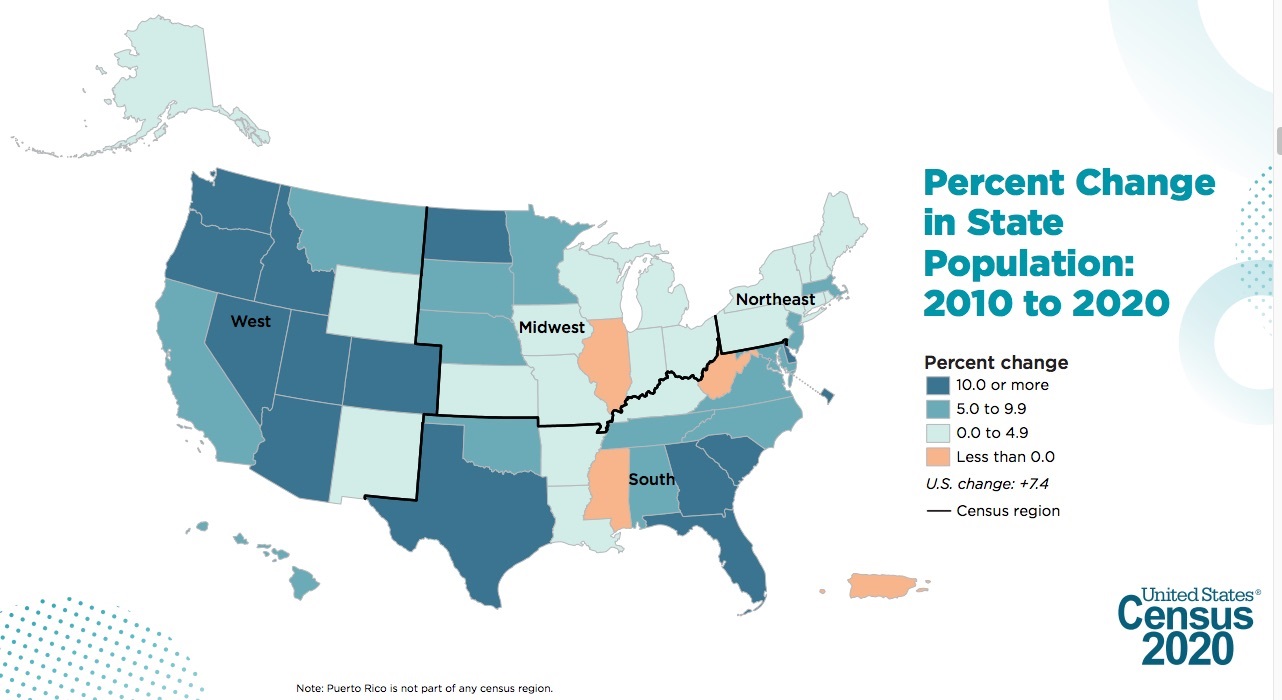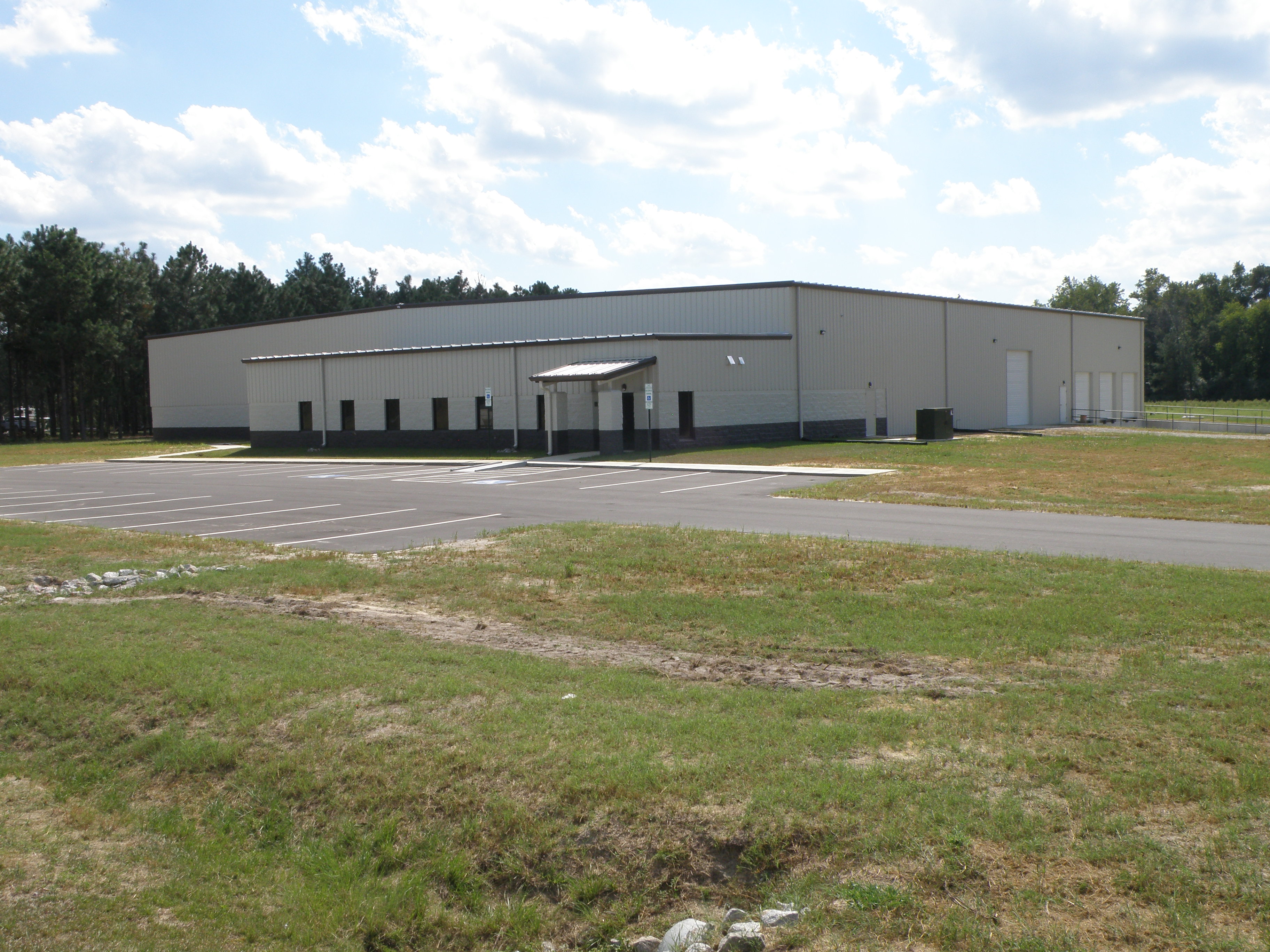
Cumberland County added more than 15,000 residents between 2010 and 2020 (a 5 percent increase) and, with 334,728 people, remains North Carolina’s fifth most populous county.
The latest population numbers, released Thursday by the Census Bureau, show that Harnett County added nearly 19,000 people over the past decade. The16.5 percent increase made it the 11th-fastest growing county in the state. With 133,568 residents, Harnett is now the 25th most populous county.
Meanwhile, two counties in the Fayetteville area saw significant population losses. Robeson County lost 17,638 residents, a 13 percent decrease and most overall in the state. Bladen County lost 5,584 residents, a nearly 16 percent drop.
North Carolina’s overall population grew from 9,535,483 to 10,439,483 over the decade, an increase of 903,905 or 9.5 percent. The growth makes it one of six states that will gain a U.S. House seat.
The latest numbers also show that Wake is now the state’s most populous county. The home of the state capital, Raleigh, Wake has grown by 228,417 in the past 10 years to 1,129,410, eclipsing Mecklenburg’s 1,115,482.
Wake’s neighbor, Johnston, was the fastest growing county in the state, Wake was fourth (25 percent) and Durham was 5th (21 percent). That means the Research Triangle added nearly 350,000 residents since 2010, the last census. Over that same period, 51 North Carolina counties lost population and 49 grew.
Although Wake is now on top, the top the five largest counties in 2020 were also the five largest in 2010: Wake, 1,129,410; Mecklenburg, 1,115,482; Guilford, 541,299; Forsyth, 382,590; and Cumberland, 334,728.
Wake (25 percent), Mecklenburg (21 percent) and Guilford (11 percent) grew faster than the state (9.5 percent) over the decade while Forsyth (9 percent) and Cumberland (5 percent) grew more slowly.
Tyrrell County remains the least populous county in North Carolina and five smallest counties are the same as in 2010: Tyrrell, 3,245; Hyde, 4,589; Graham, 8,030; Jones, 9,172; and Camden, 10,355.
After a decade of population estimates suggesting that Brunswick was the fastest-growing county, Johnston took a slight edge in the end. The five fastest-growing counties in North Carolina from 2010-2020 were: Johnston, 27.9 percent; Brunswick, 27.2 percent; Cabarrus, 26.8 percent; Wake, 25.4 percent; Durham, 21.4 percent.
The counties with the largest numeric declines were: Robeson, -17,638; Duplin, -9,790; Edgecombe, -7,652; Columbus, -7,475; and Halifax, -6,069
The counties with the largest percentage losses were: Tyrrell, -26.4 percent; Hyde, -21.0 percent; Northampton, -20.9 percent; Anson, -18.2 percent; and Washington, -16.8 percent.
The expanded data released Thursday showed an increase in the population of U.S. metro areas, an increasingly diverse nation and, for the first time in the nation’s history, a decline in the white population.
“These changes reveal that the US population is much more multiracial, and more racially and ethnically diverse, than what we measured in the past,” said Nicholas Jones, the director of race, ethnicity, research and outreach for the Census Bureau's Population Division.
The population of the nation’s metro areas grew by 9 percent from 2010 to 2020, resulting in 86 percent of the population living in U.S. metro areas in 2020, compared to 85 percent in 2010.
At 57.8 percent, the non-Hispanic white population remains the largest race or ethnic group, but the percentage declined by 8.6 percent since 2020, making it the lowest share on record.
“Many counties within metro areas saw growth, especially those in the south and west. However, as we’ve been seeing in our annual population estimates, our nation is growing slower than it used to,” said Marc Perry, a senior demographer at the Census Bureau. “This decline is evident at the local level where around 52 percent of the counties in the United States saw their 2020 Census populations decrease from their 2010 Census populations.”
County and metro area highlights
Race and ethnicity highlights
The Adult and Under-Age-18 Populations
The 2020 Census showed that the adult (age 18 and older) population group grew 10.1 percent to 258.3 million people over the decade.
“More than three-quarters, 77.9 percent, of the U.S. population were age 18 and over,” said Andrew Roberts, chief of the Sex and Age Statistics Branch in the Census Bureau’s Population Division. “The adult population grew faster than the nation as a whole. By comparison, the population under age 18 was 73.1 million in 2020, a decline of 1.4 percent from the 2010 Census.”
Changes to the adult and under-age-18 populations
The District of Columbia had the largest population age 18 and over as a percentage of population at 83.4 percent. Utah had the largest population under age 18 as a percentage of population at 29.0 percent.
Utah also had the fastest-growing adult population at 22.8 percent growth.
North Dakota had the fastest-growing population under age 18 at 22.1 percent growth.
Additional age breakdowns will be available in future 2020 Census data releases scheduled for 2022.
2020 Census Housing Units
The 2020 Census showed that on April 1, 2020, there were 140,498,736 housing units in the United States, up 6.7 percent from the 2010 Census.
Texas had the largest numeric growth in housing units with 1,611,888.
The county with the largest percent increase in housing was McKenzie County, North Dakota, with a 147.9 percent increase.
West Virginia and Puerto Rico were the only two states or state equivalents that lost housing units.
There were 126,817,580 occupied housing units and 13,681,156 vacant units in the United States.
Fayetteville area
Cumberland
2010: 319,431
2020: 334,728
Change: +15,297
Rate: +5 percent
Harnett
2010: 114678
2020: 133568
Change: 18890
Rate: 16.5 percent
Robeson
2010: 134168
2020: 116530
Change: -17638
Rate: -13 percent
Moore
2010: 88247
2020: 99727
Change: 11480
Rate: 13 percent
Hoke
2010: 46952
2020: 52082
Change: 5130
Rate: 11 percent
Bladen
35190
2020: 29606
Change: -5584
Rate: -16 percent

Keith Dunn began farming hemp in 2017. A few weeks later he founded East Carolina Hemp Supply. After years of slow but steady growth, Dunn hopes to one day be able to build a hemp processing plant in North Carolina to boost the industry and local eco

Photo provided by Bladen County Economic DevelopmentVectorTex USA, LLC, a product developer and technology company, will create 44 new jobs in Bladen County. The company will establish its first North American manufacturing facility in Elizabethtown.